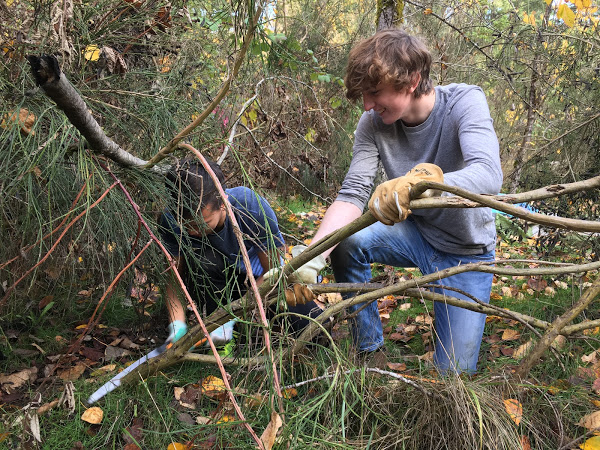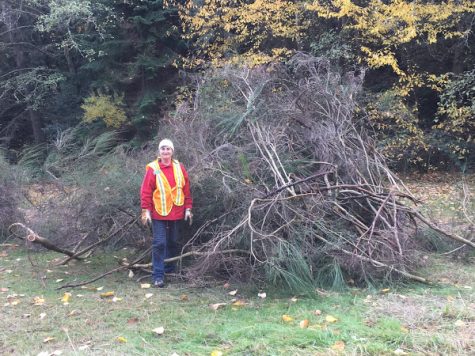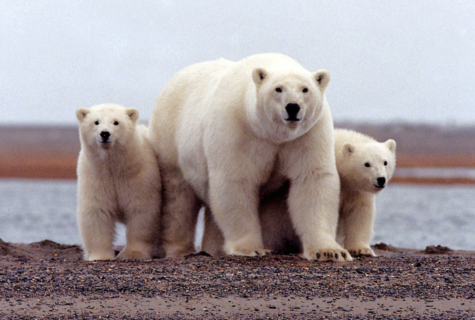Hamlin Park Isn’t Out of the Woods Yet

Two volunteers work to saw and remove scotch broom during the November work party.
Last month, the final cries of ‘Save Hamlin Park’ came to an end as the Shoreline City Council chose not to approve the plan to consolidate several city facilities into one building in the Shoreline park. The plan included removing 10 acres of densely forested area. There was a major outcry from environmental activists throughout the city, convincing the mayor to halt negotiations. Although the park is no longer at risk of losing acreage, the park is now facing a larger problem concerning its biodiversity, and the continued prosperity of the park.
One of the biggest problems the park faces is the increase of invasive plant species that have continue to drive out native plants and decrease the biodiversity of the area. English Ivy and Himalayan Blackberry are the worst offenders.
“It is in dire need of restoration, it has a lot of invasive plants,” said Kale Rose, one of the volunteers heading a Washington Native Plant Society project to restore the park’s biodiversity, “[Hamlin has] a lot of good native plants as well, but they need support from the humans that have impacted the environment.”

A woman carries a log of scotch broom, as volunteers work to clear out a field, previously overrun with scotch’s broom.
English Ivy is a ground cover, meaning that it spreads quickly over open areas. Working great in open fields, it prevents the growth of other plants if left unchecked, including potentially toppling trees from the weight of its vines. The Himalayan Blackberry – familiar to many residents because they are grown all throughout the county – are just as invasive. Not only is it a ground cover similar to the English Ivy, it is also large enough to kill established bushes, and keep a grip on the landscape.
Because these two species of plant are killing the biodiversity, a group of individuals have risen to the challenge of counteracting this threat. The local chapter of the Washington Native Plant Society has recently adopted Hamlin Park. The chapter is headed by graduates of their stewardship course.
“We started with a small goal in a very small corner of the park that borders 168th street,” said Rose during an interview, “overall, the goal is to make the habitat more resilient, and be able to take care of itself… We’re helping to remove invasive plants, and plant native plants that will help create a healthy ecosystem there.”
Even though it is challenging to keep the ivy in check, significant progress has been made to eradicate the plant. An entire patch of English Ivy, stemming right off one of the smaller trails and stretching to the nearby street has been cleared. “That whole corner is now almost devoid of English Ivy and blackberries,” said Juhyun Kim, another graduate of the Society’s stewardship program and who is currently studying for a Master’s degree in Conservation Biology, “that makes a quarter of our entire restoration area.”

Washington Native Plant Steward, Ani Gothard-Williams stands in front of one of several piles of scotch broom at the end of the November work party.
The Society’s branch, however, cannot work alone. The project is aided by several volunteers, including students, during their work parties, which are held on the third Saturday of every month from 10 am to 1 pm. “The coordinator had given us a choice of five different parks,” said Kim “I really like Hamlin park, because it had a lot of potential for bigger work parties, and more of a variety of work.” Volunteers help to pull ivy, cutaway blackberry brambles, and plant local plants such as salmonberries, ferns, and grand fir trees.
Potential volunteers should contact [email protected] for more information.







